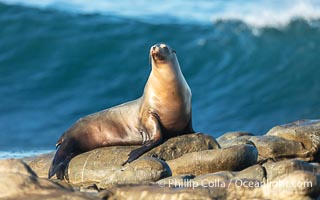
California sea lion perched on reef at La Jolla Cove in San Diego with large wave breaking in the background.
Species: California Sea Lion, Zalophus californianus
Location: La Jolla, California
Image ID: 40202
Species: California Sea Lion, Zalophus californianus
Location: La Jolla, California
Image ID: 40202
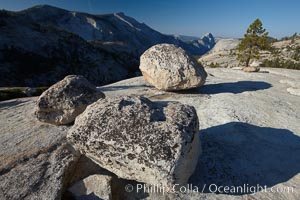
Glacial erratic boulders atop Olmsted Point, with the massive granite monoliths Half Dome and Clouds Rest in the background. Erratics are huge boulders left behind by the passing of glaciers which carved the granite surroundings into their present-day form. When the glaciers melt, any boulders and other geologic material that it was carrying are left in place, sometimes many miles from their original location.
Location: Yosemite National Park, California
Image ID: 23264
Location: Yosemite National Park, California
Image ID: 23264
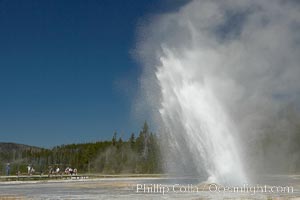
Daisy Geyser erupting with visitors visible in the distance.. Daisy Geyser, a cone-type geyser that shoots out of the ground diagonally, is predictable with intervals ranging from 120 to over 200 minutes. It reaches heights of 75 feet, lasts 3 to 4 minutes and rarely erupts in concert with nearby Splendid Geyser. Upper Geyser Basin.
Location: Upper Geyser Basin, Yellowstone National Park, Wyoming
Image ID: 13382
Location: Upper Geyser Basin, Yellowstone National Park, Wyoming
Image ID: 13382
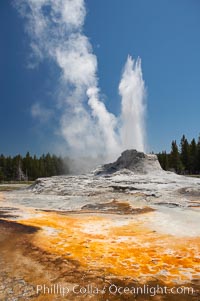
Castle Geyser erupts with the colorful bacteria mats of Tortoise Shell Spring in the foreground. Castle Geyser reaches 60 to 90 feet in height and lasts 20 minutes. While Castle Geyser has a 12 foot sinter cone that took 5,000 to 15,000 years to form, it is in fact situated atop geyserite terraces that themselves may have taken 200,000 years to form, making it likely the oldest active geyser in the park. Upper Geyser Basin.
Location: Upper Geyser Basin, Yellowstone National Park, Wyoming
Image ID: 13426
Location: Upper Geyser Basin, Yellowstone National Park, Wyoming
Image ID: 13426
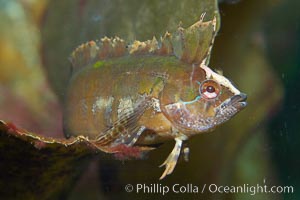
Crevice rockfish. Seldom seen, kelpfish hover among the seaweeds in wave swept tidepools and reefs. These secretive fish rapidly change color to match watever background they are near. This kelpfish has assumed the coloration of the blade of kelp it is resting on.
Species: Crevice rockfish, Gibbonsia montereyensis
Location: Monterey, California
Image ID: 13711
Species: Crevice rockfish, Gibbonsia montereyensis
Location: Monterey, California
Image ID: 13711
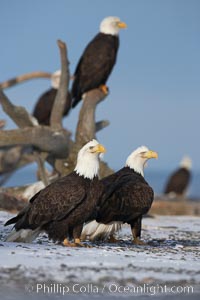
Several bald eagles stand on snow covered ground or drift wood.
Species: Bald eagle, Haliaeetus leucocephalus, Haliaeetus leucocephalus washingtoniensis
Location: Kachemak Bay, Homer, Alaska
Image ID: 22630
Species: Bald eagle, Haliaeetus leucocephalus, Haliaeetus leucocephalus washingtoniensis
Location: Kachemak Bay, Homer, Alaska
Image ID: 22630
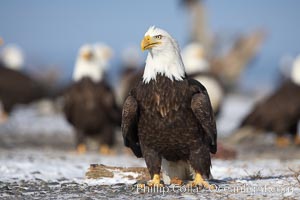
Bald eagle, standing on snow-covered ground, other bald eagles in the background.
Species: Bald eagle, Haliaeetus leucocephalus, Haliaeetus leucocephalus washingtoniensis
Location: Kachemak Bay, Homer, Alaska
Image ID: 22632
Species: Bald eagle, Haliaeetus leucocephalus, Haliaeetus leucocephalus washingtoniensis
Location: Kachemak Bay, Homer, Alaska
Image ID: 22632
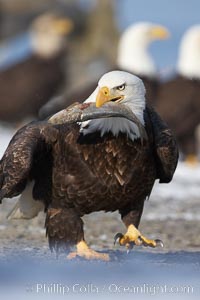
Bald eagle grasps a frozen fish in its beak, standing on snowy ground, other eagles visible in the background.
Species: Bald eagle, Haliaeetus leucocephalus, Haliaeetus leucocephalus washingtoniensis
Location: Kachemak Bay, Homer, Alaska
Image ID: 22634
Species: Bald eagle, Haliaeetus leucocephalus, Haliaeetus leucocephalus washingtoniensis
Location: Kachemak Bay, Homer, Alaska
Image ID: 22634
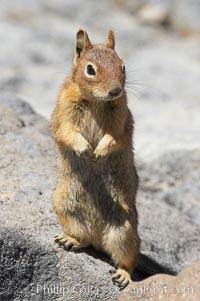
Unidentified squirrel, Panorama Point, Paradise Park.
Species: Spermophilus saturatus
Location: Mount Rainier National Park, Washington
Image ID: 13920
Species: Spermophilus saturatus
Location: Mount Rainier National Park, Washington
Image ID: 13920
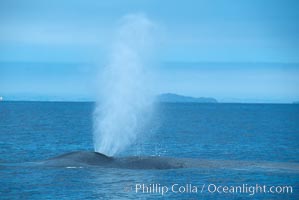
Blue whale surfacing, Isla Coronado del Norte in background, Baja California (Mexico).
Species: Blue whale, Balaenoptera musculus
Location: Coronado Islands (Islas Coronado), Baja California, Mexico
Image ID: 03342
Species: Blue whale, Balaenoptera musculus
Location: Coronado Islands (Islas Coronado), Baja California, Mexico
Image ID: 03342
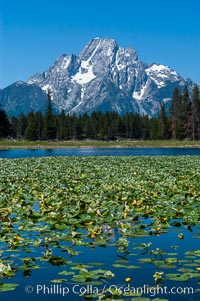
Lilypads cover Heron Pond, Mount Moran in the background.
Location: Heron Pond, Grand Teton National Park, Wyoming
Image ID: 07428
Location: Heron Pond, Grand Teton National Park, Wyoming
Image ID: 07428
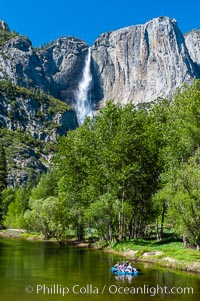
Rafters enjoy a Spring day on the Merced River in Yosemite Valley, with Yosemite Falls in the background.
Location: Yosemite Falls, Yosemite National Park, California
Image ID: 09214
Location: Yosemite Falls, Yosemite National Park, California
Image ID: 09214
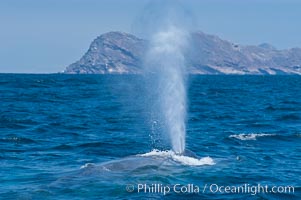
A blue whale blows (exhales, spouts) as it rests at the surface between dives. A blue whales blow can reach 30 feet in the air and can be heard for miles. The blue whale is the largest animal on earth, reaching 80 feet in length and weighing as much as 300,000 pounds. North Coronado Island is in the background.
Species: Blue whale, Balaenoptera musculus
Location: Coronado Islands (Islas Coronado), Baja California, Mexico
Image ID: 09497
Species: Blue whale, Balaenoptera musculus
Location: Coronado Islands (Islas Coronado), Baja California, Mexico
Image ID: 09497
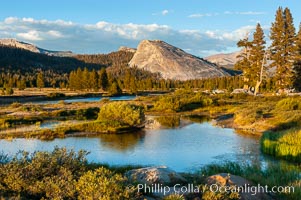
The Tuolumne River flows serenely through Tuolumne Meadows in the High Sierra. Lembert Dome is seen in the background.
Location: Tuolumne Meadows, Yosemite National Park, California
Image ID: 09940
Location: Tuolumne Meadows, Yosemite National Park, California
Image ID: 09940
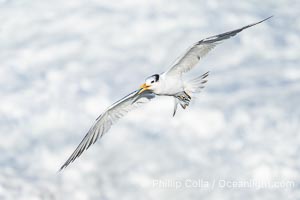
Royal tern in flight, Thalasseus maximus, adult nonbreeding plumage, ocean water in the background, La Jolla.
Species: Royal tern, Sterna maxima, Thalasseus maximus
Location: La Jolla, California
Image ID: 40691
Species: Royal tern, Sterna maxima, Thalasseus maximus
Location: La Jolla, California
Image ID: 40691

Wind turbines, rise above the flat floor of the San Gorgonio Pass near Palm Springs, with snow covered Mount San Jacinto in the background, provide electricity to Palm Springs and the Coachella Valley.
Location: San Gorgonio Pass, Palm Springs, California
Image ID: 22209
Location: San Gorgonio Pass, Palm Springs, California
Image ID: 22209
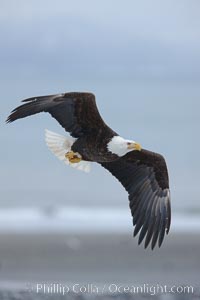
Bald eagle in flight, banking, wings spread, above beach and Kachemak Bay in background.
Species: Bald eagle, Haliaeetus leucocephalus, Haliaeetus leucocephalus washingtoniensis
Location: Kachemak Bay, Homer, Alaska
Image ID: 22650
Species: Bald eagle, Haliaeetus leucocephalus, Haliaeetus leucocephalus washingtoniensis
Location: Kachemak Bay, Homer, Alaska
Image ID: 22650
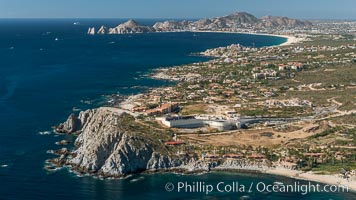
Punta Ballena, Faro Cabesa Ballena (foreground), Medano Beach and Land's End (distance). Residential and resort development along the coast near Cabo San Lucas, Mexico.
Location: Cabo San Lucas, Baja California, Mexico
Image ID: 28930
Location: Cabo San Lucas, Baja California, Mexico
Image ID: 28930

Del Mar Racetrack and Fairgrounds, Panoramic Photo.
Location: Del Mar, California
Image ID: 30489
Panorama dimensions: 4386 x 20362
Location: Del Mar, California
Image ID: 30489
Panorama dimensions: 4386 x 20362

California ground squirrel, Otospermophilus beecheyi, La Jolla.
Species: California Ground Squirrel, Otospermophilus beecheyi
Location: La Jolla, California
Image ID: 40158
Species: California Ground Squirrel, Otospermophilus beecheyi
Location: La Jolla, California
Image ID: 40158
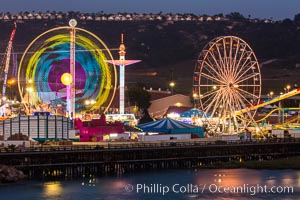
San Diego County Fair at night. Del Mar Fair at dusk, San Dieguito Lagoon in foreground.
Location: Del Mar, California
Image ID: 31026
Location: Del Mar, California
Image ID: 31026
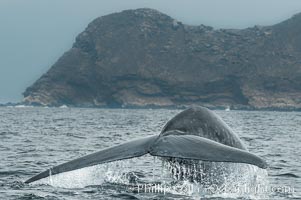
A blue whale raises its fluke before diving in search of food. The blue whale is the largest animal on earth, reaching 80 feet in length and weighing as much as 300,000 pounds. North Coronado Island is in the background.
Species: Blue whale, Balaenoptera musculus
Location: Coronado Islands (Islas Coronado), Baja California, Mexico
Image ID: 09484
Species: Blue whale, Balaenoptera musculus
Location: Coronado Islands (Islas Coronado), Baja California, Mexico
Image ID: 09484
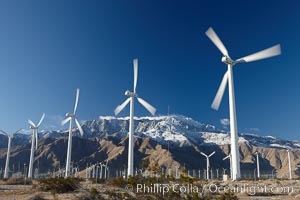
Wind turbines, rise above the flat floor of the San Gorgonio Pass near Palm Springs, with snow covered Mount San Jacinto in the background, provide electricity to Palm Springs and the Coachella Valley.
Location: San Gorgonio Pass, Palm Springs, California
Image ID: 22205
Location: San Gorgonio Pass, Palm Springs, California
Image ID: 22205
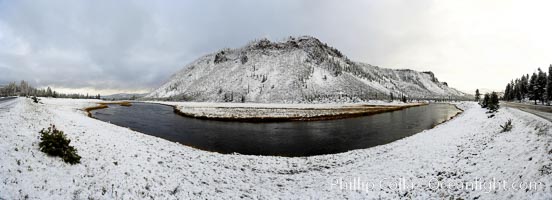
San Diego city skyline, showing the buildings of downtown San Diego rising above San Diego Harbor, viewed from Point Loma with the San Diego Yacht Club in the foreground, sunset.
Location: San Diego, California
Image ID: 22248
Location: San Diego, California
Image ID: 22248
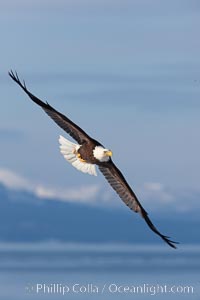
Bald eagle in flight, Kachemak Bay and the Kenai Mountains in the background.
Species: Bald eagle, Haliaeetus leucocephalus, Haliaeetus leucocephalus washingtoniensis
Location: Kachemak Bay, Homer, Alaska
Image ID: 22664
Species: Bald eagle, Haliaeetus leucocephalus, Haliaeetus leucocephalus washingtoniensis
Location: Kachemak Bay, Homer, Alaska
Image ID: 22664
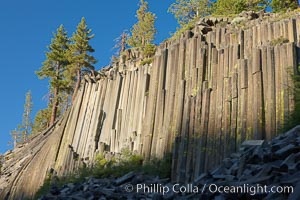
Devil's Postpile, a spectacular example of columnar basalt. Once molten and under great pressure underground, the lava that makes up Devil's Postpile cooled evenly and slowly, contracting and fracturing into polygonal-sided columns. The age of the formation is estimated between 100 and 700 thousand years old. Sometime after the basalt columns formed, a glacier passed over the formation, cutting and polishing the tops of the columns. The columns have from three to seven sides, varying because of differences in how quickly portions of the lava cooled.
Location: Devils Postpile National Monument, California
Image ID: 23266
Location: Devils Postpile National Monument, California
Image ID: 23266
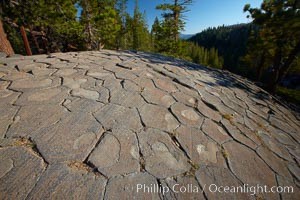
Devil's Postpile, a spectacular example of columnar basalt. Once molten and under great pressure underground, the lava that makes up Devil's Postpile cooled evenly and slowly, contracting and fracturing into polygonal-sided columns. The age of the formation is estimated between 100 and 700 thousand years old. Sometime after the basalt columns formed, a glacier passed over the formation, cutting and polishing the tops of the columns. The columns have from three to seven sides, varying because of differences in how quickly portions of the lava cooled.
Location: Devils Postpile National Monument, California
Image ID: 23267
Location: Devils Postpile National Monument, California
Image ID: 23267
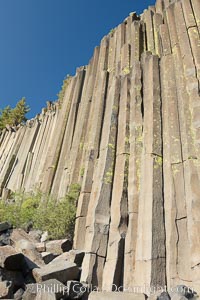
Devil's Postpile, a spectacular example of columnar basalt. Once molten and under great pressure underground, the lava that makes up Devil's Postpile cooled evenly and slowly, contracting and fracturing into polygonal-sided columns. The age of the formation is estimated between 100 and 700 thousand years old. Sometime after the basalt columns formed, a glacier passed over the formation, cutting and polishing the tops of the columns. The columns have from three to seven sides, varying because of differences in how quickly portions of the lava cooled.
Location: Devils Postpile National Monument, California
Image ID: 23285
Location: Devils Postpile National Monument, California
Image ID: 23285
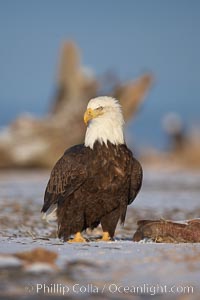
Bald eagle, standing on snow-covered ground, other bald eagles in the background.
Species: Bald eagle, Haliaeetus leucocephalus, Haliaeetus leucocephalus washingtoniensis
Location: Kachemak Bay, Homer, Alaska
Image ID: 22657
Species: Bald eagle, Haliaeetus leucocephalus, Haliaeetus leucocephalus washingtoniensis
Location: Kachemak Bay, Homer, Alaska
Image ID: 22657
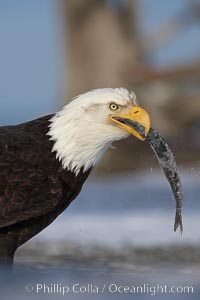
Bald eagle eating a fish, standing on snow-covered ground, other bald eagles visible in background.
Species: Bald eagle, Haliaeetus leucocephalus, Haliaeetus leucocephalus washingtoniensis
Location: Kachemak Bay, Homer, Alaska
Image ID: 22665
Species: Bald eagle, Haliaeetus leucocephalus, Haliaeetus leucocephalus washingtoniensis
Location: Kachemak Bay, Homer, Alaska
Image ID: 22665